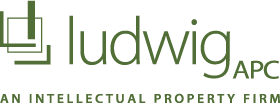Intellectual Property (IP) is a complex topic in its own right, especially for business owners who are (rightfully) more interested in keeping their businesses running smoothly than they in understanding the finer points of IP. One of the biggest challenges business owners face is how to value their intangible IP assets—such as patents, trademarks, copyrights, brands, trade secrets, data sets, publicity rights, proprietary code, know-how, etc.—and then understanding how those assets contribute to their company’s financial performance and profits.
Assigning Value: No Easy Task
To illustrate, let’s take the case of a growing tech company that wants to understand how its brand assets (the IP in this example) help the business, and if those brand assets can be leveraged to improve financial performance. With few examples of brands assets being sold, there is little baseline transactional data we can use to assign actual value. Therefore, we must first quantify how this company’s brand assets connect to financial performance and then calculate the percent of cash flows attributable to those brand assets. This is no easy task.
The value of an IP asset, such as a company’s brand, can be derived from the economic benefits it creates. For example:
- Owning the rights to IP gives the owner a “monopoly” of sorts on that particular asset. This contributes to its value by creating barriers to entry and excluding others from being able to use the asset. This gives companies greater pricing power over that asset, drive sales volume, and ultimately profit margins.
- The potential for litigation should others infringe on a company’s IP rights represents value in the form of actual damages and awards, while the mere threat of litigation, which often is sufficient to prevent unauthorized use, represents value as well.
- Companies can sell the rights or permission to use their IP, which results in licensing revenue and royalties (recurring revenue), or can be sold outright to others.
- IP also has inherent value in that it signals innovation, uniqueness, source of origin to consumers. Think of companies such as Apple or Starbucks whose very names can drive sales, reduce the need to market, and affect margins—all of which has value to a business.
Word to the Wise
Unlike a company’s expected lifespan, which essentially can be perpetual if the enterprise is managed well, IP and the products that use IP have finite lifespans. Thus, companies can expect the financial benefits from IP to grow, peak, and then decline as other IP and other products take their place.
The lesson here is that companies cannot rest on their IP laurels, assuming the level IP contributes to financial performance today will remain in place in perpetuity. Present value and future value must be considered.
For decades, Kodak placed all of its eggs in the film photography IP basket—its core business—only to see that mode give way to digital technology (even though, ironically, Kodak was somewhat of a pioneer in the field). It’s not that Kodak was unable to transform or was unaware of what was coming, but rather they weren’t able to move quickly enough. They needed to start innovating and connecting their IP to customer needs earlier on.
They Make Experts for That
If this all sounds a bit complicated, don’t get discouraged. IP valuation is complicated. But just as there are IP rights and litigation experts like Eric Ludwig out there to help business owners and managers protect their IP rights, there are intellectual property valuation and damages experts who can help business leaders determine the economic benefits of their IP and other intangibles.
Your IP valuation expert should be able to . . .
Value Total Operations of the Business
- Perform a business valuation
- Forecast future economic benefits, discount to present value
- Value of business = value of 100% of assets and resources used by the business
Forecast Each Source of Revenue
- Examine all revenue and benefit-generating products and services
- Group and bundle similar revenue sources
- Create forecasts for each
Identify Key Assets and Resources
- Identify all assets and resources used by the business
- Group as tangible assets, IP, intangible assets, and other resources
Develop Apportionment Rates
- Identify most important/least important assets or resources to each revenue source
- Detail products/services rely on each identified asset
Value the Forecast Apportion Rates
- Total the forecast period rates calculated for each asset or resource
- Discount each asset’s total rates to a present value
Check Results
- Apply the concept of equal values: value of business = value of all revenue sources = value of all assets & resources
Looking for More Information?
Let’s Talk! Brian Buss, CFA, is an intellectual property valuation and damages expert whose San Diego-based firm calculates and communicates the financial impact of trademarks, copyrights, patents, brands, and intangible assets to C-level executives and others in the IP community.
Nevium Intellectual Property Consultants | 858 255 4361, x2 | www.nevium.com



